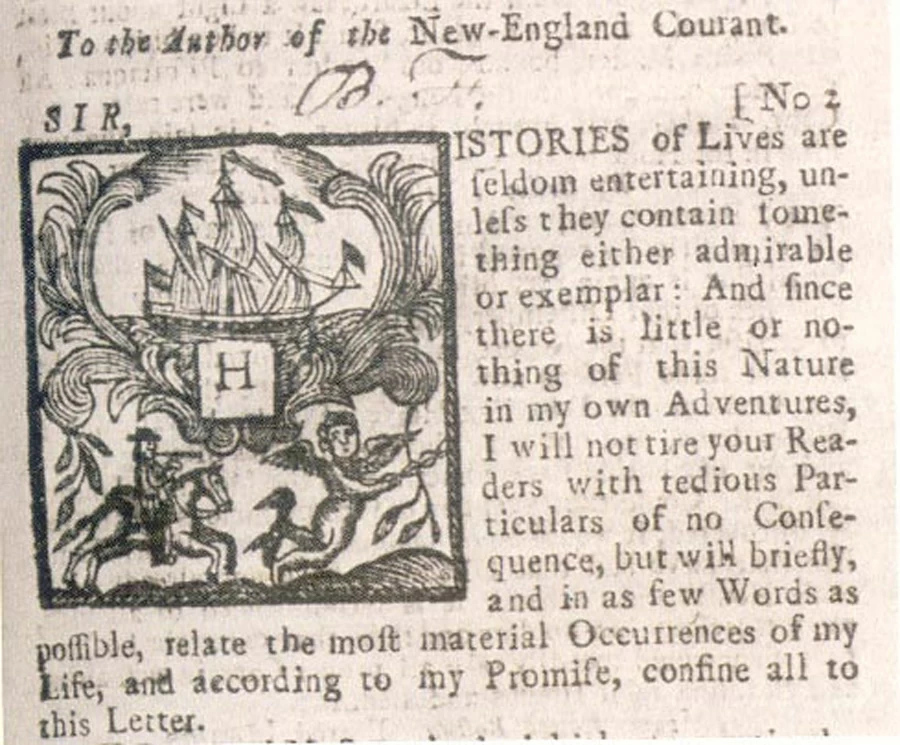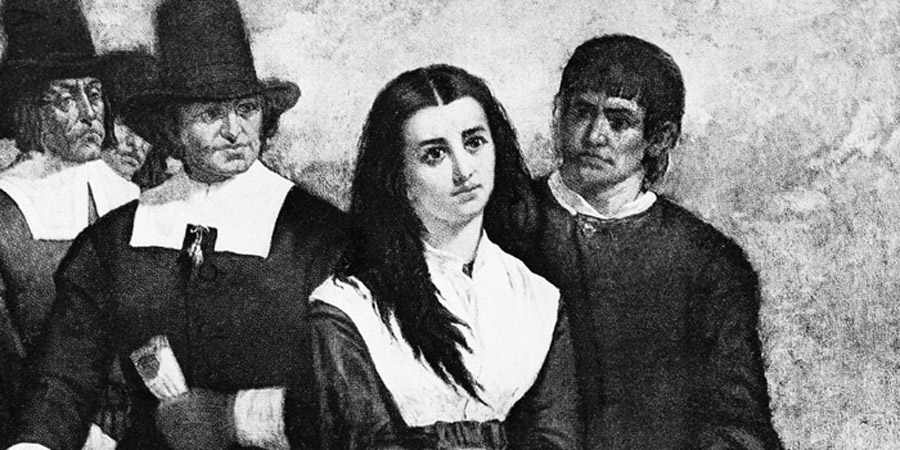In 1722, a series of letters was published in the New England Courant by a middle-aged widow called Silence Dogood. The letters were extremely witty and it seemed she had a gift for satire. A new letter appeared from her every few weeks, poking fun at religious hypocrisy, life in colonial America, the persecution of women, fashion, and the pretensions of Harvard College.
The letters from Silence Dogood became hugely popular, but no one had any idea who she was or where she came from. However, many male readers were so impressed and delighted with her writing that they even offered to marry her.
But unfortunately, Silence Dogood never existed in reality. Instead, she was a creation of none other than Benjamin Franklin, a Founding Father who helped to draft the Declaration of Independence and the US constitution.
Frankin as a Boy
Many know Franklin as a Philadelphia writer. However, the popular printer, inventor, statesman, and writer started out as a mischievous boy from Boston. He was born in 1706 and was the fifteenth child of Josiah Franklin, a shop owner and candle maker. During his childhood, he explored the colonial city, mill ponds, streets, getting into trouble and getting an education along with it.

When Benjamin was eight years old, his father enrolled him in grammar school and prepared him for a life in the ministry. Benjamin was a quick learner and did very well in his studies. However, the fees were too expensive for his father, who later withdrew Benjamin from school and put him to work in the shop.
After that, Benjamin Franklin educated himself from books he borrowed or brought and whenever he was able to find time from his work. And then, when Franklin was sixteen years old, he introduced the readers of Boston to a funny middle-aged widow named Mrs. Silence Dogood.
- Outrageous Astronomy – Who Was Behind The Great Moon Hoax of 1835?
- The Magician Who Never Was: The Great Bottle Conjuror of 1749
Aspirations as a Writer
After few years working in his father’s shop, the 12-year-old Franklin apprenticed to his elder brother James Franklin, a printer. While working in the print shop he was able to read the books before returning them, which helped him to gain knowledge. When his brother started publishing The New England Courant, a local newspaper, Benjamin used to carry the papers to the customers.
James Franklin often published his friends’ writing which created eagerness in his younger brother to have his own writing in the paper. Therefore, the sixteen-year-old Franklin devised a plan to disguise himself as a writer. At night he would put the letter in front of the printing house door, from where it was retrieved and published.
The Famous Mrs. Silence Dogood
James and his friends never guessed the true identity of the author who wrote the letters, and Benjamin his authorship. For over six months, Benjamin’s letters were published, written from a perspective and voice of “Mrs. Silence Dogood”, who was witty, charming, and satirical. All the letters were quite delightful, criticizing in a fun way the manners in Boston, Harvard, fashion-related things, and the colonial streets.
The letters were especially sarcastic about Harvard college, saying that the students there learned nothing so much as how to become boastful. She commented on certain fashion absurdities of the time, drinking habits of Boston, and much more.

Silence Dogood was free with her advice and wrote openly about the way women should be treated. Her writings charmed the people of Boston, who appreciated them as social satire. Several men in Boston were so impressed with her work that they wrote to the paper offering proposals of marriage.
The Game Is Up
After writing for six months, the letters from Silence Dogood suddenly stopped, leaving her readership distraught. In response, James Franklin published an advert about her in his paper, saying that whoever finds the true Mrs. Silence Dogood account at any cost will get thanks for such pains.
- Felines in the Moat? The Great Washing of the Lions Hoax
- Terrifying Letters: The Watcher House of Westfield, NJ
After this, Benjamin Franklin unveiled his identity and disclosed that he was the widow to all Boston people, including his brother. James Franklin was not at all happy with his brother’s success. The rivalry between the siblings caused Benjamin Franklin to break the apprenticeship terms and go away from Boston. He then went to Philadelphia, where he set up his own press and started publishing Pennsylvania Gazette.
The Witch Trial Article
In 1730, the Pennsylvania Gazette published a sensational article, describing a witch trial that happened in Mount Holly near Burlington. As per the article, more than 300 people witnessed the trial of a man and woman who were accused of conducting witchcraft. They were accused of making sheep dance, hogs speak, and many other unnatural acts. As a result, they were put to the test to prove their innocence.

In one of the tests, they were weighed and compared to the weight of a bible. If they weighed more, then they were considered not to be witches. In another, they would be tied and thrown in water. If the suspects floated, then they would be considered witches. All of the accused passed the bible test, but in the second test one of the accusers panicked and floated. Dissent broke out, with some people supporting the accuser while others did not.
Another Hoax
Such an account of the witch trial had a major grip on the readers of Philadelphians. Nevertheless, the story was not true because, apart from anything else, witch trials did not happen in America in 1730. The report was not true at all.
The author behind the Pennsylvania Gazette account of the witch trial was not known for over a century, until the research of John McMaster showed that the article was another work of Benjamin Franklin. Franklin was responsible for several more such hoaxes throughout his life, on his way to becoming one of the most famous Americans of that time.
Top Image: Franklin continued his writing in later life, working on such documents as the Declaration of Independence. Source: David Martin / Public Domain.
By Bipin Dimri